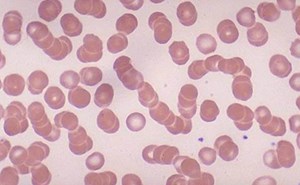
A Novel Case-Based Echocardiography Teaching Platform for Emergency Medicine and Critical Care Medicine Trainees
Point-of-care transthoracic echocardiography (POC TTE) is among the most crucial adjuncts in the evaluation and management of critically ill patients in the Emergency Department (ED) and Intensive Care Unit (ICU). Numerous studies have demonstrated a routine role for POC TTE in the evaluation of undifferentiated hypotension and acute chest pain, detection of pulmonary embolism, heart failure, or pericardial effusion, and in cardiac arrest.1,2 A consensus statement by the American Society of Echocardiography and the American College of Emergency Physicians published in 2010 referred to POC TTE as a “fundamental tool” and recommended its use in the assessment of hypotension, left ventricular function, and volume status, and to guide management in cardiac arrest.3
Point-of-care ultrasound (POCUS) has well-documented, multi-organ system
applications.1 Given its recognized usefulness, access to this modality has increased globally.4 Over the last several years, ED availability of POCUS in Asia, Europe and North America has grown significantly.4 The diagnostic capability and accuracy of POCUS has similarly evolved. ED providers experienced with POCUS showed equivalent or better sensitivity and specificity when diagnosing certain pathologies compared to laboratory biomarkers or evaluation by expert consultants. In a prospective study in Slovenia, the presence of B-lines on portable ultrasound detected by an Emergency Medicine provider was more sensitive and specific in the diagnosis of acute decompensated heart failure than laboratory assessment of N-terminal pro-brain natriuretic peptide.5 Additionally, multiple studies have shown strong interrater agreement between Emergency Medicine physicians and cardiologists in the diagnosis of reduced left-ventricular ejection fraction using POC TTE.6 Most importantly, POC TTE in the ED changes management
decisions in acutely ill patients and improves care. Ferrada et al. published a randomized trial in 2014 in which 215 hypotensive patients arriving to the trauma bay were randomized to have a POC TTE performed in their initial evaluation or to be managed using conventional practices. This study showed that patients who had POC TTE performed received a lower volume of
intravenous fluids, had a reduced time from the trauma bay to the operating room, and had higher rates of ICU admission. While not statistically significant, this study also found a trend towards a reduced mortality rate.7 Another investigation published by Ferada et al. showed that POC TTE directly changed the management plans in 96% of hypotensive patients greater than 65 years of age.8
Similarly, POC TTE is heavily used in the ICU. In 2015, a prospective observational study conducted in 142 ICUs across France, Belgium and Switzerland conveyed that intensivists utilized POCUS in greater than 50% of patients.9 Studies have also shown a significant survival benefit when POC TTE is used in critically ill patients with undifferentiated shock. Kanji et al.
demonstrated reduced 28-day mortality and lower administration of intravenous fluids when intensivists used POC TTE to guide early resuscitation for patients admitted to the ICU with vasopressor-dependent hypotension.10
Ultrasound instruction is expanding and has now been incorporated into the curriculum of multiple medical schools and clinical training programs.11 However, despite its acknowledged growing importance, there is no consensus training guideline among professional societies and a standardized program proven to develop requisite competency among trainees is lacking. The American Society of Echocardiography and the European Association of Cardiovascular Imaging have published recommendations on core topics that should be addressed and suggest that significant time should be spent utilizing POC TTE in a wide variety of patients and clinical presentations.12 A combination of bedside instruction and web-based teaching modules has
shown promise as one possible approach to adequate POC TTE education. Cawthorne et al. demonstrated that third year medical students randomized to a lecture-based educational POC TTE program with in-person instruction had better image acquisition when compared to students who performed fully self-directed educational modules and scan training using ultrasound simulation; however, interpretation of images was not significantly different.13 In another study, Emergency Medicine trainees with limited POC TTE experience who performed a short course that incorporated both online and in-person training showed high interrater agreement with cardiologists in their assessment of left ventricular function, left ventricular ejection fraction by M-mode, detection of pericardial effusion and IVC diameter assessment.6 Further, online teaching platforms may be more efficient and time-effective. In a study published by Kang et al., forty seven fellows and attendings with varying prior POC TTE experience were placed into two groups in which one performed a live, in-person class and the other performed a shorter online course. Kang et al. found that those with less previous POC TTE experience preferred the web-based module and concluded that this format could be a time saving alternative with similar educational benefit when compared to in-person didactic teaching.14 Lastly, in 2012, Royce et al. published a study in which Emergency Medicine, Anesthesia, and Critical Care Medicine attendings performed a two-day workshop that incorporated both online and in-person instruction. This study showed strong interrater agreement with cardiologists when evaluating POC TTE for volume status, biventricular function, left atrial pressure and hemodynamic state further indicating the efficacy of this hybrid model among individuals of differing clinical training backgrounds.15
In addition to in-person instruction, a novel, web-based POC TTE teaching platform has been incorporated into the education curriculum for anesthesia and surgical critical care medicine fellows at Johns Hopkins Hospital. A multi-disciplinary team of physicians including cardiac anesthesiologists, an emergency medicine-critical care medicine fellow, and an anesthesiology resident collaborated to create an online, asynchronous, case-based application that focuses on key aspects of POC TTE image interpretation and the corresponding clinical decisions that would be most appropriate. Each of the cases reviewed were obtained from real-life clinical scenarios in the surgical intensive care unit and cardiovascular surgical intensive care unit at Johns Hopkins Hospital. Trainees receive a patient vignette with a transthoracic echocardiography (TTE) video series and complete a 22-item multiple choice form that simulates what an individual may assess for using bedside ultrasound and what decisions could be made based on the images provided. Each question has a corresponding explanation that describes specific aspects of the case TTE as well as reviews recommendations from recent literature articles and the American Society of Echocardiography. Subsequently, group discussions are held with the trainees and nationally board-certified echocardiographers to review the case. While participants have conveyed positive reflections and demonstrated strong clinical competency with POC TTE utilizing this platform, future studies are needed to evaluate its efficacy and generalizability in different clinical settings, training programs, and geographic regions.
References:
- Hashim A, Tahir MJ, Ullah I, Asghar MS, Siddiqi H, Yousaf Z. The utility of point of care ultrasonography (POCUS). Ann Med Surg (Lond). 2021 Nov 2;71:102982. doi:10.1016/j.amsu.2021.102982. PMID: 34840746; PMCID: PMC8606703.
- Kovell, Lara C., Mays T. Ali, Allison G. Hays, Thomas S. Metkus, Jose A. Madrazo, Mary C. Corretti, Susan A. Mayer, Theodore P. Abraham, Edward P. Shapiro, and Monica Mukherjee. "Defining the role of point-of-care ultrasound in cardiovascular disease." The American Journal of Cardiology 122, no. 8 (2018): 1443-1450.
- AJ Labovitz, VE Noble, M Bierig, SA Goldstein, R Jones, S Kort, TR Porter, KT Spencer, VS Tayal, K Wei. Focused cardiac ultrasound in the emergent setting: a consensus statement of the American Society of Echocardiography and American College of Emergency Physicians. J Am Soc Echocardiogr, 23 (2010), pp. 1225-1230
- Mengel-Jorgensen T., Jensen M.B. Variation in the use of point-of-care ultrasound in general practice in various European countries. Results of a survey among experts. Eur. J. Gen. Pract. 2016;22:274–277. doi: 10.1080/13814788.2016.1211105.
- Prosen G., Klemen P., Strnad M., Grmec S. Combination of lung ultrasound (a comet-tail sign) and N-terminal pro-brain natriuretic peptide in differentiating acute heart failure from chronic obstructive pulmonary disease and asthma as cause of acute dyspnea in prehospital emergency setting. Crit. Care. 2011;15:R114. doi: 10.1186/cc10140.
- Bustam A, Noor Azhar M, Singh Veriah R, Arumugam K, Loch A. Performance of emergency physicians in point-of-care echocardiography following limited training. Emerg Med J. 2014 May;31(5):369-73. doi: 10.1136/emermed-2012-201789. Epub 2013 Feb 21. PMID: 23428721.
- P Ferrada, D Evans, L Wolfe, RJ Anand, P Vanguri, J Mayglothling, J Whelan, A Malhotra, S Goldberg, T Duane, M Aboutanos, RR Ivatury. Findings of a randomized controlled trial using limited transthoracic echocardiogram (LTTE) as a hemodynamic monitoring tool in the trauma bay. J Trauma Acute Care Surg, 76 (2014), pp. 31-37
- P Ferrada, P Vanguri, RJ Anand, J Whelan, T Duane, M Aboutanos, A Malhotra, R Ivatury. A, B, C, D, echo: limited transthoracic echocardiogram is a useful tool to guide therapy for hypotension in the trauma bay–a pilot study. J Trauma Acute Care Surg, 74 (2013), pp. 220-223.
- Zieleskiewicz L, Muller L, Lakhal K, Meresse Z, Arbelot C, Bertrand PM, Bouhemad B, Cholley B, Demory D, Duperret S, Duranteau J, Guervilly C, Hammad E, Ichai C, Jaber S, Langeron O, Lefrant JY, Mahjoub Y, Maury E, Meaudre E, Michel F, Muller M, Nafati C, Perbet S, Quintard H, Riu B, Vigne C, Chaumoitre K, Antonini F, Allaouchiche B, Martin C, Constantin JM, De Backer D, Leone M; CAR'Echo and AzuRea Collaborative Networks. Point-of-care ultrasound in intensive care units: assessment of 1073 procedures in a multicentric, prospective, observational study. Intensive Care Med. 2015 Sep;41(9):1638-47. doi:1007/s00134-015-3952-5. Epub 2015 Jul 10. PMID:26160727
- HD Kanji, J McCallum, D Sirounis, R MacRedmond, R Moss, JH Boyd. Limited echocardiography-guided therapy in subacute shock is associated with change in management and improved outcomes. J Crit Care, 29 (2014), pp. 700-705
- KT Spencer, BJ Kimura, CE Korcarz, PA Pellikka, PS Rahko, RJ Siegel. Focused cardiac ultrasound: recommendations from the American Society of Echocardiography. J Am Soc Echocardiogr, 26 (2013), pp. 567-581
- 12. AN Neskovic, T Edvardsen, M Galderisi, M Garbi, G Gullace, R Jurcut, H Dalen, A Hagendorff, P Lancellotti, European Association of Cardiovascular Imaging Document Reviewers: BA Popescu, R Sicari, A Stefanidis. Focus cardiac ultrasound: the European Association of Cardiovascular Imaging viewpoint. Eur Heart J Cardiovasc Imaging, 15
(2014), pp. 956-960 - Cawthorn TR, Nickel C, O'Reilly M, et al. Development and evaluation of methodologies for teaching focused cardiac ultrasound skills to medical students. J Am Soc Echocardiogr. 2014;27(3):302-309. doi:10.1016/j.echo.2013.12.006
- Kang TL, Berona K, Elkhunovich MA, Medero-Colon R, Seif D, Chilstrom ML, Mailhot T. Web-based teaching in point-of-care ultrasound: an alternative to the classroom? Adv Med Educ Pract. 2015 Mar 13;6:171-5. doi: 10.2147/AMEP.S72159. PMID:25792863; PMCID: PMC4364591.
- Royse CF, Haji DL, Faris JG, Veltman MG, Kumar A, Royse AG. Evaluation of the interpretative skills of participants of a limited transthoracic echocardiography training course (H.A.R.T.scan course). Anaesth Intensive Care. 2012;40(3):498-504. doi:10.1177/0310057X1204000316
Mina Ghobrial, MD



